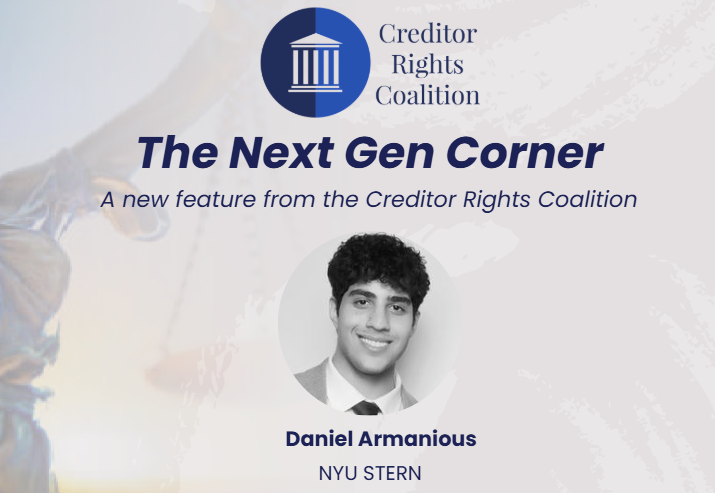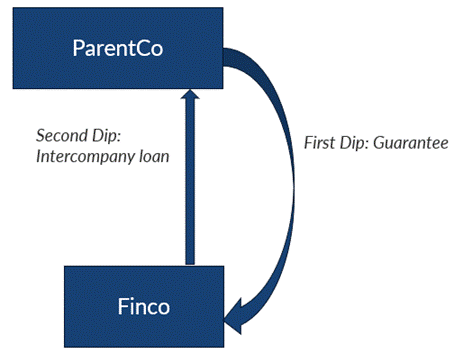Introducing the Creditor Coalition Contributors
This group of top restructuring lawyers, financial advisers, investment bankers, investors and law professors will examine timely financial and restructuring topics and share their insight, bringing light to complex and important issues.
Read on to meet the Contributors and the topics they'll tackle.

Rachel Albanese

Philip Anker

Martin Bienenstock

Kevin Eckhardt

David Elsberg

Marc Heimowitz,

Vlad Jelisavcic

Sidney Levinson

Mark Lightner

Kyle Lonergan

Jim Millar

James Newton

Bradford J. Sandler

Jennifer Selendy

Daniel Shamah

Paul Silverstein

Clifford J. White III
The views of our Contributors should not be attributed to their respective firms or the Creditor Rights Coalition. In addition, the Coalition may take positions as part of its Advocacy efforts that do not necessarily reflect the view of Contributors and should not be attributed to any Contributor.
Here’s What the Contributors have to say

Pari-Plus Syndications: A Sub Rosa LME?
By Daniel Armanious, a junior studying Finance and Math at NYU Stern.
Sabre priced a $1bn pari-plus senior secured notes offering on November 20th at 11.25%, marking the first fully pre-marketed and broadly syndicated pari-plus financing in the high-yield market. This is more than clever engineering — it is the institutionalization of a structure once limited to bespoke privately negotiated rescue financing. Manufactured structural seniority has now entered the mainstream, and legacy secured creditors have never had more reason to worry.
The Centerbridge Transaction
Sabre’s core business — global travel distribution and airline booking technology — entered 2023 under acute stress. The post-pandemic recovery in air-travel volumes remained muted, and Sabre’s earnings lagged the rebound seen by peers. Liquidity was running thin, and absent a strategic capital solution, Sabre risked being forced into a distressed exchange or worse.
Enter Centerbridge: together with a select club of institutional lenders, Centerbridge structured a first of its kind pari-plus secured financing delivering roughly $700mn of fresh capital, allowing Sabre to refinance $670mn of its 9.250% SSNs due 2025 via cash tender. The tailor-made financing vehicle came with carefully engineered guarantees and structural protections for the new-money lenders (discussed below). With an embedded PIK toggle, the facility provided Sabre breathing room, stabilizing liquidity and allowing EBITDA to normalize alongside travel volume.
While effective, this was still classic private-credit rescue financing — not a market-shaping shift. The lender group stepped in only after pricing the risk as a distressed financing: ~13.25% cash / ~14.75% PIK.
What is different today is the form, not the concept. The 2025 Sabre syndication takes pari-plus out of the private-credit workshop and turns it into a public, broadly distributed HY product — competitively priced, underwritten by banks, and available to any institutional buyer. That transition represents a fundamentally new dynamic and a far more alarming precedent for secured lenders.
The Evolution of the Double-Dip
Historically, double-dip structures emerged indirectly — often for tax optimization — with their litigation consequences becoming relevant only post-hoc, after distressed funds purchased the paper at a discount and began exploiting entity-level recoveries in Chapter 11.
A classic double dip arises from the following financing structure:
- A ParentCo guarantees the paper (first dip), and
- The FinCo loans the proceeds to ParentCo via an intercompany loan (second dip).

In bankruptcy, the FinCo lenders would be entitled to recover on the guarantee and intercompany claims against ParentCo, therefore benefiting from a double recovery. This is the foundation of the modern double-dip.
Where Pari-Plus Diverges
A pari-plus double dip preserves the double-dip architecture but adds something fundamentally threatening to legacy secured creditors: structurally senior claims against obligors outside the existing credit box, often foreign subsidiaries. This pulls previously unpledged assets into the new pari-plus financing allowing new-money lenders to sit above the existing secured stack without triggering priming mechanics. In the case of Sabre, Centerbridge was able to leap ahead of existing lenders on nearly a third of the company’s EBITDA through this “pari-plus” structure.
Why the Structure Survives Scrutiny
Explain this to a bankruptcy lawyer and you will quickly drown in hypotheticals. Distressed professionals tend to default (no pun intended) to “glass half empty,” and every structure has theoretical attack points. But two simplifying assumptions help clarify why these structures generally withstand such scrutiny:
- Guarantees are joint and several — each ParentCo obligor is fully liable for the entire face value of the claim.
- These are guarantees of payment, not of collection — enforceable immediately upon FinCo’s default rather than subject to certain conditions.
Sabre’s pari-plus financing relies directly on these principles.
This was not a privately-placed back-room exercise like the 2023 Centerbridge facility. Sabre:
- created the full pari-plus structure,
- pre-marketed it to the Street, and
- syndicated it into the public HY investor base.
This is the leap from bespoke LME weaponry to mainstream leveraged finance tooling. The engineering is not new, the distribution model is.
Two Interpretations
The Optimistic View
Debtors — and certainly arrangers — argue Sabre merely used its existing covenant capacity and corporate structure to provide a creative financing solution. If investors will fund structurally advantaged capital at attractive pricing, why should an issuer not pursue such cheap liquidity?
The More-Sinister View
Secured creditors see something far more aggressive: a company and often sponsor, subject only to capacity constraints, can now dilute secured recoveries on a syndicated basis, with no sacred-rights consent, no priming fight, and no dropdown transaction. The fulcrum now sits wherever the issuer chooses to manufacture it.
In-Court Implications: Murky and Dangerous
To date, no court has directly ruled on a modern, deliberately constructed pari-plus financing in a fully contested Chapter 11.
Whether courts will:
- respect these synthetic seniorities,
- collapse corporate separateness,
- recharacterize intercompany loans as equity,
- or attack the structure as a constructive fraudulent transfer,
is simply uncertain, particularly in the wake of more recent creditor-protective rulings (e.g., ConvergeOne, Serta) — in the SDTX, no less. You can read more about the legal uncertainties here: https://creditorcoalition.org/treatment-of-double-dips-in-bankruptcy/.
What is certain: pari-plus gives new-money lenders considerably more negotiating leverage. The “Deal Away” was once a theoretical threat — now it has credible firepower behind it.
Why This Is Historic for HY
The Sabre issuance demonstrates that the market is now willing to pay for engineered structural seniority, not merely covenant protection. Banks have also shown they will underwrite and distribute these instruments to the broad HY investor base. This is the moment when double-dip engineering stops being boutique liability-management craftwork and becomes a standardized, repeatable product embedded directly into BSL structures. If history is any guide, the question is not whether the loan market adopts this technology, but when.
Bottom Line
For the HY market, this is a regime change. For secured creditors, it is an existential warning. For future restructurings, it marks the arrival of a structurally senior financing tool that courts have not yet fully confronted — but soon will.
Sabre didn’t invent the economics — it institutionalized them. By syndicating a pari-plus structure into the public HY markets, Sabre created the first widely distributed priming instrument that circumvents the traditional LME mechanics entirely: the first Sub Rosa LME.
Copyright Creditor Rights Coalition 2025
